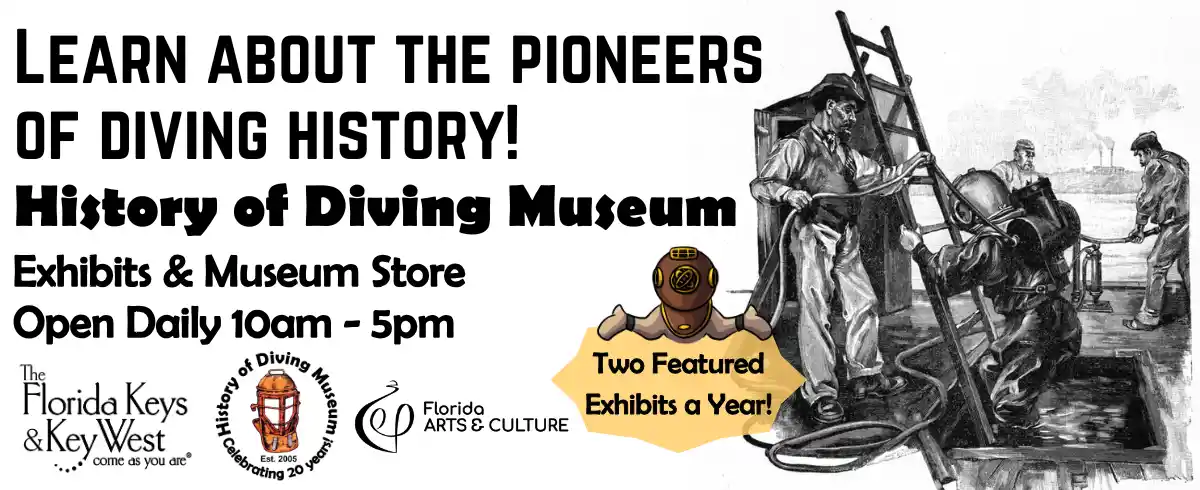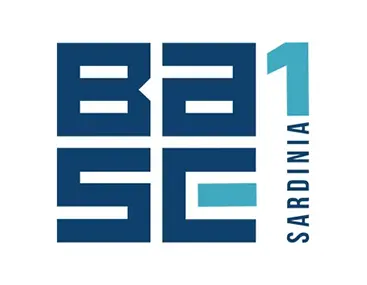

Equipment
When Sidemount Becomes the Solution
Global Underwater Explorers (GUE) standardized its training and dive operations on a specially configured, backmount JJ-CCR rebreather more than a decade ago. Though the configuration is popular among members, there are environments and uses where the unit is arguably suboptimal. As a result, GUE explorers like Kirill Egorov and others have opted for alternative configurations where needed. Here the tech/rebreather instructor explains his rationale for going “side” in this article written for GUE members. The right tool for the right job.
Reprinted from GUE’s QUEST Vol 25 No 2. Text and photos by Kirill Egorov.
Starting in 2008, and for a few years thereafter, GUE began to seriously investigate the feasibility of introducing CCR courses into the curriculum. Initially, a lot of senior instructors were relatively reluctant; but as helium became more expensive and less available, and our projects took us to deeper and more remote locations, the use of closed-circuit rebreathers looked more and more promising. Eventually, the JJ-CCR was chosen, and Richard Lundgren drove the development of the CCR program with his usual determination. As a result, we released our closed-circuit rebreather diver program, GUE CCR, in 2013.
As a base configuration for the class and for all GUE related activities, Richard suggested backmounted, manifolded tanks for diluent and a back-mounted oxygen tank. The logic behind this configuration seems unbeatable to me to this day, and it remains my main configuration of choice.
The GUE CCR standard configuration certainly has advantages:
- All the skills acquired during our open-circuit training (e.g., valve manipulation, stage management, and auxiliary equipment placement) stay the same as a diver transitions to CCR diving.
- There is consistency between GUE CCR and PSCR configurations.
- Divers are carrying enough immediately accessible bailout gas either via bailout or DSV (dive surface valve) without the need for a gas-switch procedure.
- This configuration is compact enough to transport in a car or on a boat while providing an exceptionally stable platform underwater.
So, if the JJ-CCR in the GUE configuration seems like an all around winner, why are we even having this conversation?

The Mother of Invention
I guess I should explain a little bit about my personal experiences. Over the last seven or eight years, my diving adventures have brought me to more and more unique locations where I began to encounter certain limitations of the standard GUE CCR configuration. The caves were getting more and more remote. Sometimes they required trekking through the jungle, or navigating dry passages inside the cave. Some passages and cave entrances were becoming progressively more and more restrictive, and sometimes narrow to the point that using back-mounted rebreathers became impossible.
I strongly believe that since we have both Global and Explorers in the name of our organization, the size and weight of our equipment should not be a limiting factor in our exploration and documentation activities. That’s where my configuration discovery process began, and I was lucky to be guided by people like Brett Hemphill, Andy Pitkin, and Matt Vinzant when I joined Karst Underwater Research (KUR).
My first challenge came as I was allowed to dive at Twin Dees Weeki Wachee cave system. I was given full access to the cave to photo document it. I quickly realized that doing it on open-circuit would be extremely complicated from a configuration perspective—and the cost of gas required would probably make it impossible. There was no way I could push the GUE CCR configuration through the narrow entry tube, and it would be equally impossible to scooter through the first 400 m/1,300 ft of the fragile and decorated passage with a low ceiling.
That’s when my teammates carefully guided me towards what can be described as the KUR CCR configuration: A back-mounted rebreather with standard 3-liter tanks mounted on it, oxygen on the right and inflation gas on the left, and bailout/diluent gas carried in two side-mounted tanks. Either of these tanks can be connected to the ADV/BOV using a quick disconnect. This allows the diver to carry a large quantity of bailout gas while keeping a relatively streamlined profile, and it facilitates a transition to an even more streamlined profile during the dive by unclipping one or both tanks. This setup also makes it easy to connect any gas (safety or decompression) to the rebreather at any point during the dive.
Fine tuning
As is often the case with any sidemount configuration, the setup and finetuning process is meticulous and painful. Every tiny detail matters: backplate adjustments, sidemount attachment types and positioning, tank material and buoyancy characteristics, and amount of gas in the tanks. But once it’s set up and dialed in, it turns into quite an efficient option.
The KUR configuration is the solution for exploring deep caves where relatively short restrictions prevent entering either the whole cave (like in Twin Dees) or sections of the cave (like Eagles Nest).
But what if the whole cave is restrictive and either deep or very extensive?

Pseudo and true
In these contexts, the idea of sidemount rebreathers really comes into play. We can say that there are two main types of sidemount rebreather: true and “pseudo” (my own terminology).
True sidemount rebreathers can be easily detached, pushed, pulled, or left in a cave. They should be as self-contained as possible (built-in counterlungs and on-board oxygen and possibly diluent tanks). Examples of these are the Liberty SM, Flex, SF2 sidemount and the Halcyon RBK.
One of the problems I find with this type of rebreather is that they are quite large and will have to replace one of the bailout sidemount tanks on your body, which I personally find extremely disconcerting. While you can definitely increase the amount of bailout gas by adding stages, if the path is truly a sidemount type passage, stages will unfortunately increase damage to the cave, and they can be hard to reach.
With all the help I could get from Chris Le Maillot and Julien Fortin from El Centro Investigador del Sistema Acuífero de Quintana Roo (CINDAQ), and the Mexican Cave Exploration Project (MCEP) to figure it all out, I learned that a sidemount RB80, dubbed the RBK, does the trick and makes it possible to keep both sidemount tanks on my side where they belong. It is robust and simple, and given the flat profile, it works just fine. But, you need to select a reasonable drive gas that takes care of the so-called fraction drop (See: FO2 drop below) that still works as your open-circuit bailout at a given depth.

FO2 drop
In semi-closed rebreathers, like any rebreathers, divers breathe in a loop. When they exhale, the carbon dioxide (CO2) in their breath is removed, and the remaining oxygen (O2) is supplemented to keep the diver supplied with fresh air. The fraction drop refers to what happens to the concentration of oxygen in the breathing loop over time. As the diver breathes in and out, some oxygen is consumed with each breath. In a semi-closed rebreather, the system adds oxygen periodically to maintain a certain level of oxygen in the loop. However, because the diver is consuming oxygen with each breath and the system only adds oxygen intermittently, there can be a slight decrease in the oxygen concentration over time.
Similarly, in a semi-closed rebreather, the oxygen level in the breathing loop gradually drops as the diver consumes oxygen faster than the system adds it. This is why divers using such systems need to monitor their oxygen levels and occasionally manually adjust or “top off” the system to ensure they have enough oxygen for the duration of their dive. It takes anywhere from five to eight breathing cycles for gas to be refreshed/re-injected, and the fraction of O2 in the loop drops roughly by 4% with every exhalation).

The drawbacks of this approach are the need to perform multiple gas switches on a multilevel or a sawtooth profile and the fact that the gas efficiency on the RB80 is less optimal compared to CCR.
As an additional feature, both the sidemount CCRs and the RB80/RBK can relatively easily be converted into bailout rebreathers. They are easily sidemountable, they can be driven by any of the bailout bottles, and they are very robust.
Pseudo sidemount
So, what is a pseudo-sidemount rebreather? These are units that can easily be added to a regular sidemount set up without any modification of the open-circuit components. However, once you put it on, you will not be able to remove it again. And their profiles are slightly larger than the typical true-sidemount rebreather.
Currently, there are two units of this kind: the KISS Sidewinder and Fathom Gemini. While I have really enjoyed diving my KISS, I also found that the unit has very low to no flood tolerance, the scrubber size is fairly limited, and it requires a lot of modifications to fit my requirements.

There are also some options that I have not personally tried but that are becoming fairly popular. These are chest mounted rebreathers, both semi-closed and fully closed (Triton, O2ptimaCM, and FX-CCR). These rebreathers have some very attractive features: they are exceptionally easy to travel with (some can be taken as carry-on baggage) and they can be attached to any regular gear configuration without any major changes. They can be clipped to a backplate and wing, a recreational jacket-style buoyancy compensator, or a sidemount harness.
Thanks to the counterlung placement, these units feature an incredibly low work of breathing and a great flood tolerance. On the other hand, they increase the combined height of your profile, and when scootering, they can deflect the prop wash towards the bottom (leading to significant visibility reduction).

Back to the JJ
As you can see, when choosing to deviate from the well-designed and well-conceived GUE CCR configuration and venturing into the world of deep, long caves featuring some nasty restrictions, there is no perfect, one-size-fits-all configuration.
While I find it extremely fun to take photos and explore some of the coolest caves while playing with new rebreathers and configurations, I always feel the best whenever I can get my JJ-CCR with backmount tanks and go for a dive on a wreck or in a big, fun cave. It feels familiar, comfortable, and stable.
Dedication
While writing this article, I learned that a friend and a teammate of mine did not return from an exploration dive at Phantom Springs, Texas. A lot of what I know about the use of CCRs and sidemount in caves I learned by diving with him and other divers in the Karst Underwater Research group. I would like to dedicate this article to the memory of Brett Hemphill, the explorer.
DIVE DEEPER
InDEPTH: The Thought Process Behind GUE’s CCR Configuration by Richard Lundgren
InDEPTH: The RB80 Semi-closed Rebreather: A Successful Exploration Tool by David Rhea
InDEPTH: How GUE’s Approach to Rebreather Diving Compares to My Previous Courses By Andy Pilley

Kirill Egorov graduated from Moscow State Pedagogical University as a Physics teacher in 1999, and attended a course of archaeology at Moscow State University. These two specialties allowed him to participate in multiple scientific research programs, including an archaeological and textile research project at the Moscow Kremlin Museums and Viking Age textile research at the Russian Natural and Historical Heritage Institute. After his first try-dive in 2000, Kirill was totally amazed with the underwater world, and made it his hobby first, and a profession later. He became a PADI recreational and technical instructor in 2003-2004 and joined GUE in 2005. Since then, he has concentrated on two main passions: diving and teaching diving. Kirill is currently teaching for GUE at Cave 3 and Tech 3 and CCR 2 levels and was recently appointed as GUE Director Of training. He resides in High Springs, Florida which allows him to cave dive as much as possible while pursuing a new hobby, underwater photography.





















































